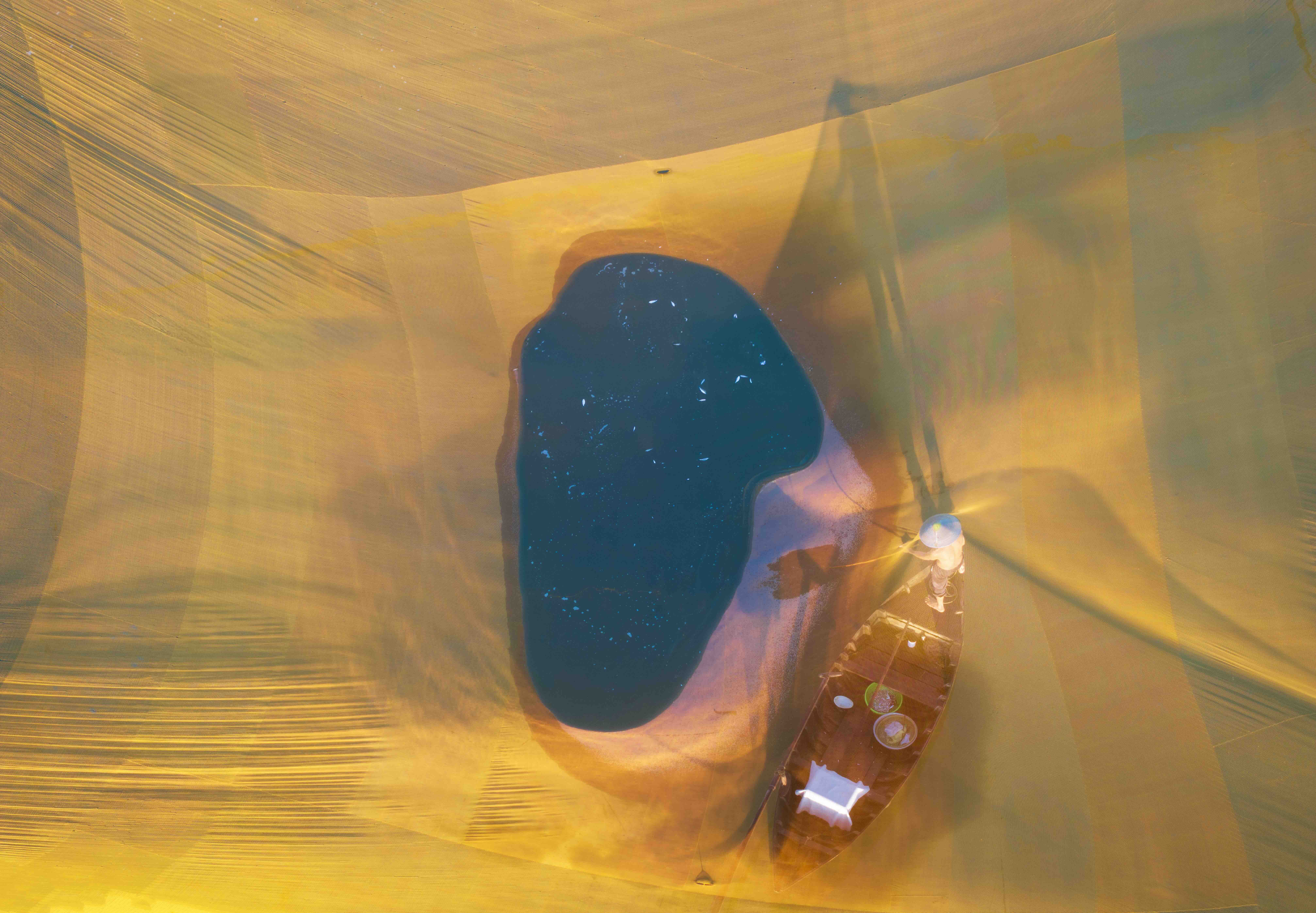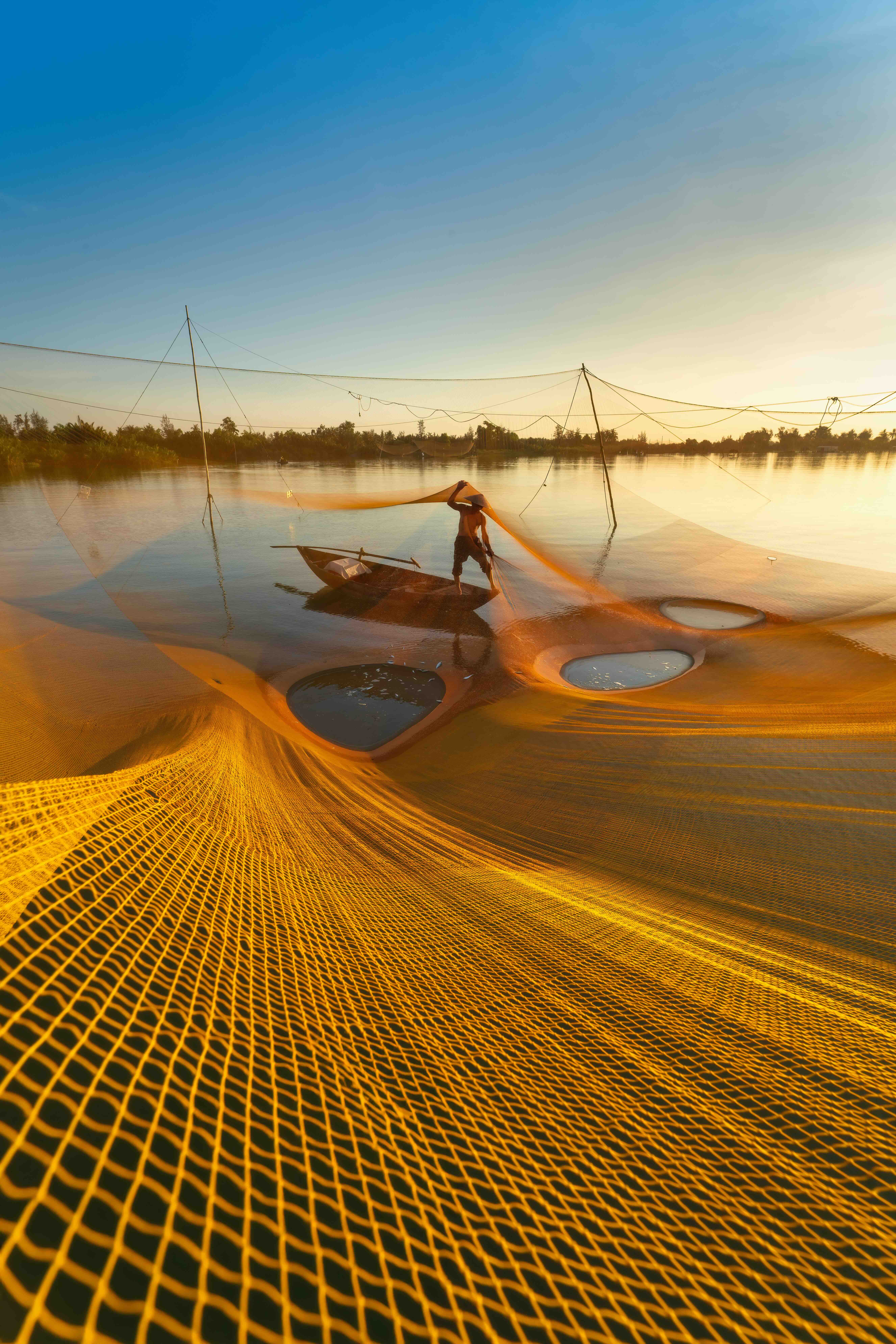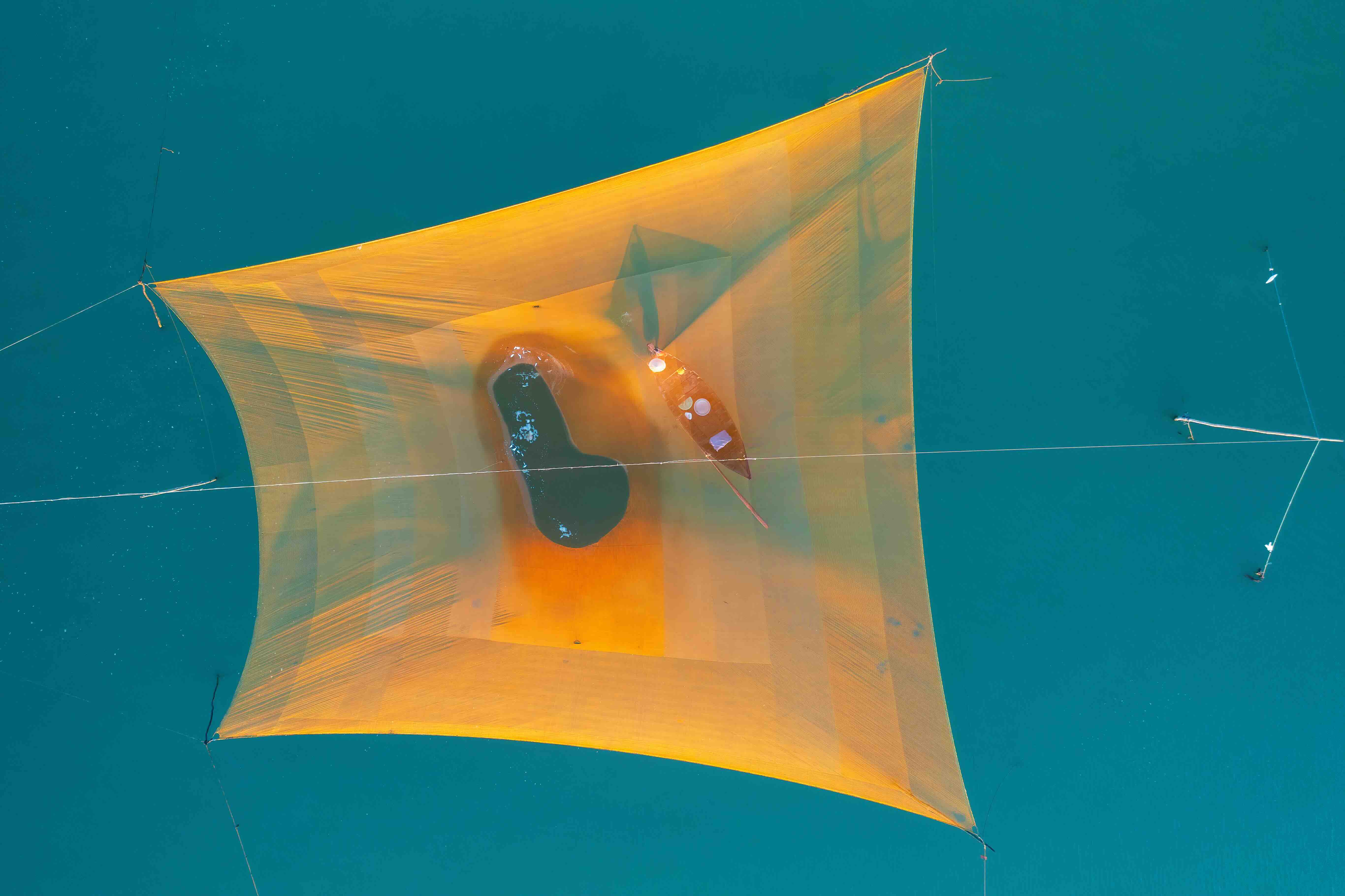Story: Van Anh
Photos: Van Viet
As the first rays of sunlight gently brush the nipa palm groves, Cua Dai quietly stirs awake. In the delicate morning mist, accompanied by the soft rhythm of paddles dipping into water and the steady breath of the sea, the silhouettes of “ro cho” fishing nets gradually appear, silent as memories, steadfast like the very lives bound to the ebb and flow of the waters. These nets are not merely tools for fishing; they are symbols of the enduring life and spirit of Cua Dai – a fishing village in Danang.

The rhythm of ro cho in Cua Dai
Situated at the confluence of three rivers – the Thu Bon, Truong Giang, and De Vong – before they flow into the sea, Cua Dai lies just a few kilometers from the center of Hoi An Ancient Town. It embodies a rugged, unpolished beauty, almost untouched by time.
Cua Dai is a modest fishing village, yet it carries the soul of the region. Corrugated iron-roofed homes sit humbly beneath lines of coconut palms, small boats are moored at riverbanks, and scattered along the lower Thu Bon River to Cua Dai Bay are the iconic ro cho lift nets. These structures have long become emblems of the riverine life here. Each net spans roughly 60 square meters, held in place by ropes and four large bamboo poles driven deep into the riverbed. A system of pulleys leads back to a small bamboo hut, called a cho ro, where a hand-cranked winch raises the net above the water’s surface.
The equipment locals use during their long nights of tending the ro cho nets is remarkably simple: a conical hat, a gas lantern, and a slender bamboo rod for maneuvering the net. Every step, from setting the net and securing it, to the final haul, is guided by hard-earned experience: the flow of the tide, the direction of the wind, and a seasoned feel for the sea. Each pull of the net tests one’s strength; each wait for the perfect tide demands patience; and each harvest, taken from a small pouch beneath the net’s belly, requires careful attention to wind direction while rowing the boat, to ensure smooth and efficient work. Seemingly simple, this craft is in fact a quiet art, requiring precision, resilience, and years of experience.

Livelihood on the waterways
On a summer morning in Cua Dai, I had the privilege of meeting Uncle Muoi, a fisherman who has been devoted to the ro cho craft for nearly 40 years.
“This work is hard, so very hard,” Uncle Muoi said with a gentle smile across his sun-weathered face. He shared that the ro cho trade is a legacy handed down through generations. “Three generations in my family have worked the ro cho, but it’s such a tough life. My siblings have all moved away to make a living elsewhere. Only I remain with it,” he sighed, though a quiet pride sparkled in his eyes.
His typical shift runs from 6 p.m. until about 6 or 7 a.m. the next morning, working from dusk until the sun rises over the mouth of the sea. The fishing season lasts from the twelfth lunar month through the end of August, avoiding the storm-laden months that batter Central Vietnam.
The image of Uncle Muoi inspecting his net is etched into my memory: a small yet steadfast figure shrouded in morning mist, golden light glinting on droplets that clung to the shimmering yellow net. He seems to stand as a representative of the resilient, steadfast fishermen of Cua Dai, those who strive to preserve the unique cultural values of this fishing village.

In the setting of Cua Dai, the ro cho nets serve as a bridge between people and nature, between past and present. For Uncle Muoi and the fishermen here, the craft is not merely a means of livelihood; it is a thread that binds them to the fishing village and to generations of ancestors.
In the face of modernization, where many traditional crafts are gradually fading as an inevitable course, ro cho nets still stand firm amidst the wind and mist. And so, Uncle Muoi’s story is not just about a fisherman who has spent his life by the water, but a shared tale of resilience in preserving cultural heritage amid the flow of life. Come to Cua Dai, rise with the dawn, and listen to the gentle rhythm of waves lapping against the nets. You just might hear the heartbeat of life along the waterways of Central Vietnam.










